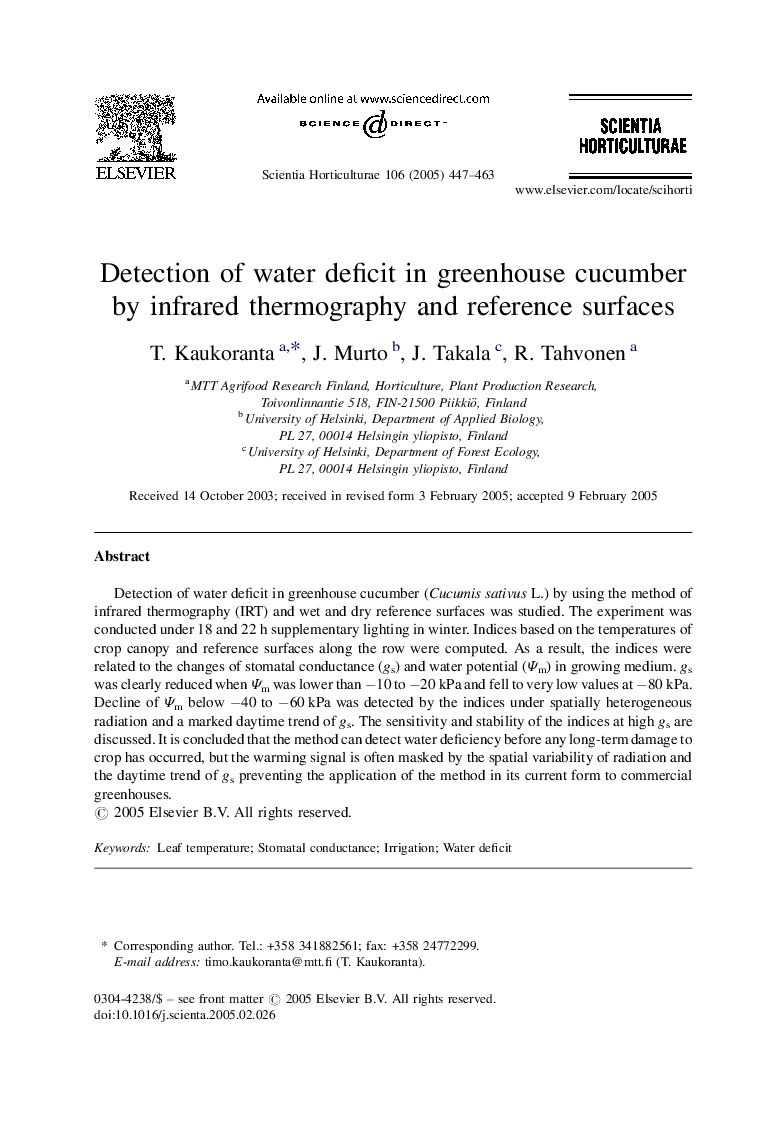| Article ID | Journal | Published Year | Pages | File Type |
|---|---|---|---|---|
| 9488740 | Scientia Horticulturae | 2005 | 17 Pages |
Abstract
Detection of water deficit in greenhouse cucumber (Cucumis sativus L.) by using the method of infrared thermography (IRT) and wet and dry reference surfaces was studied. The experiment was conducted under 18 and 22 h supplementary lighting in winter. Indices based on the temperatures of crop canopy and reference surfaces along the row were computed. As a result, the indices were related to the changes of stomatal conductance (gs) and water potential (Ψm) in growing medium. gs was clearly reduced when Ψm was lower than â10 to â20 kPa and fell to very low values at â80 kPa. Decline of Ψm below â40 to â60 kPa was detected by the indices under spatially heterogeneous radiation and a marked daytime trend of gs. The sensitivity and stability of the indices at high gs are discussed. It is concluded that the method can detect water deficiency before any long-term damage to crop has occurred, but the warming signal is often masked by the spatial variability of radiation and the daytime trend of gs preventing the application of the method in its current form to commercial greenhouses.
Related Topics
Life Sciences
Agricultural and Biological Sciences
Horticulture
Authors
T. Kaukoranta, J. Murto, J. Takala, R. Tahvonen,
